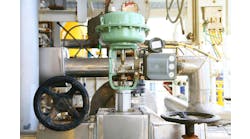George Bush is on the threshold of the White House, even as a charismatic black community organizer from Chicago runs for the U.S. presidency, andhalfway around the worlda superpower is mired in conflict in Afghanistan. This may sound awfully familiar, but the year to which Im referring is 1988: George Bush the elder is on his way in, even as Jesse Jackson makes the first credible bid by an African American for the Democratic Partys nomination. And the superpower hopelessly embroiled in Afghanistan? The Soviet Union, of course, which will no longer exist in just a few short years.
Such was the world stage 20 years ago, when in October, the process automation community received its very first issue of Control, the first (and still only!) magazine focused exclusively on the information needs of instrumentation and control professionals in the process industries. Much has changed in the past 20 years, even as much remains the same.
Back then, it seems, much more of our time was spent in the weeds of technical detail. I can remember when this magazine published tables comparing the technical specs of various distributed control systems, including such stats as network highway speed. Can you imagine anyone even asking such questions today?
And while the control function must by necessity remain, the focus today is not on process control itself, but increasingly on abstracting and insulating end-user personnel from the need to understand all those technical details.
Further, this abstaction is at work along two different planes: At the instrumentation and control system level, where suppliers are striving to facilitate easyeven automaticconfiguration of increasingly sophisticated control strategies, and at the optmization level, where the decades-old quest for the Holy Grail of computer-integrated manufacturing (CIM) is finally being achieved under the banner of real-time performance management (RtPM).
Process manufacturersand the process automation suppliers who serve themare at work on two fundamental questions: How can we make it easier for plant personnel, who are stretched thin and often undertrained, to more easily manage their process control systems and instrumentation? Further, how can they do so even as they confront the imperative to optimize their plants in economic terms?
Two trips I took over the past several weeks illustrated for me not only the primacy of these issues, but also the potential to tame them.
The first trip was to Austin, Texas, for a sneak peek at Emersons latest release of its DeltaV digital automation system. (See exclusive story Emerson's New DeltaV.) The latest generation of the systems engineering tools all are driven by the vision of making the jobs of all plant personnelfrom engineer to technician to operatoreasier. The development teams motto? Configuration is a four-letter word.
I also visited Dallas for the Invensys Process Systems Client Conference. There, Hannes Mittermaier of Sasol, the global chemicals and fuels manufacturer based in South Africa, explained how his company had worked with Invensys to implement a top-to-bottom RtPM system within one of its organizations, including development and deployment of economics-based performance metrics and dashboards at each level of the organizationall with no additional capital expenditures.
At its foundation, the project relies on Invensys real-time accounting algorithms deployed at the controller level, feeding operator dashboards. Just knowing the economic impact of their decisions, operators were able to make the investment pay for itself in only two months.
The benefits were easy to evaluate and the accountants agreed! said Mittermaier. There are no islands of automation any longer, he added, only islands of organization.
Okay, so maybe we really cant just forget about process control. But perhaps well all finally be able to speak a language the accountants can understand.





